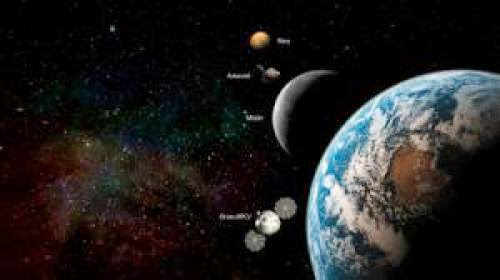The space agency is weighing a proposal to build a "gateway spacecraft" that would hang in space about 277,000 miles from the Earth and 38,000 miles past the moon -- more than a quarter million miles further into space than the orbit of the International Space Station.The Deep Space Habitat project is an attempt to work out optimum size of capsule, equipment and resources to send outside of the Earth-Moon system and into deep space and support a human crew of four. L2 is probable locationThe mission would most likely be the second LAGRANGIAN POINT OF THE EARTH-MOON SYSTEM or L2. Initial concept missions for the structure to cope with cover a SIXTY-DAY JAUNT into the inky blackness, and a much-longer 500-DAY VARIANT. "[Placing a spacecraft at the Earth-Moon Lagrange point beyond the moon as a test area for human access to deep space is the best near-term option to develop required flight experience and mitigate risk," concluded a recent NASA report. The new outpost -- which may be built from parts leftover from the construction of the ISS and as well as Russian and Italian hardware -- would be an ideal first mission for the heavy lift spacecraft dubbed Space Launch System (SLS) that is being developed at NASA. Artist concept of L2 stationWith the push for exploration Beyond Earth Orbit (BEO) increasing, a proposed habitat for human exploration outside the confines of Earth's immediate space is taking shape as NASA presses forward with the development of its new Deep Space Habitat (DSH) - a module-based habitation facility that will be used as part of manned exploration missions to the moon, asteroids, and eventually Mars wrote CHRIS GEBHARDT FOR NASA SPACEFLIGHT in the spring of 2012. Colin Lecher, writing for "POPULAR SCIENCE", notes Engineers at Marshall Space Flight Center and experts Johnson Space Center in Houston (led by NASA ASTRONAUT ALVIN DREW) are tinkering with the spaceship mockup, deciding the right size, necessary equipment, and everything else that's going to make a mission. The team's also planning what kind of toys will be sent along and built in. Some of it's the sort of thing you might expect from a trip like this--life support systems, food storage, etc.--but other parts of it are especially interesting. One of the best is a 3-D printer, which would allow astronauts to create any tools they need right on the spot. On the lower-tech side, there's also greenhouse for astronauts to grow their own and food, and a barrier of water on the outside that could be used to shield explorers from cosmic rays, notes Lecher.Apollo 11 lunar astronaut Buzz Aldrin has long urged NASA to set up a similar "FLOATING LAUNCHING PAD" at a different balance point between Earth and the Moon, called EML-1 OR L1, and he told "IO9" that platforms at L1 or L2, plus fueling depots for spaceships, would serve as appropriate "intermediate steps" for voyages to Mars and other worlds. Bigelow Aerospace lunar habitatAldrin's vision calls for NASA to lead in the construction of the infrastructure needed for space transport beyond Earth orbit, while leaving the development of facilities on the Moon's surface to commercial ventures. A human-tended station at EML-1 or EML-2 could help direct the robotic construction of habitats and factories on the moon, to be occupied at a later time by humans. Aldrin touted Phobos to President ObamaThe eventual goal would be to have a human-tended station on the Martian moon Phobos, directing robots to build facilities for permanent residents on the Red Planet. And then? "We make a commitment to permanence," Aldrin explained. "It's like the Pilgrims on the Mayflower." It is a bold vision with multiple civil and commercial sector destinations.



0 comments:
Post a Comment